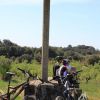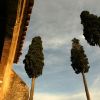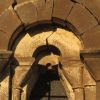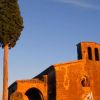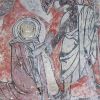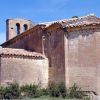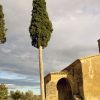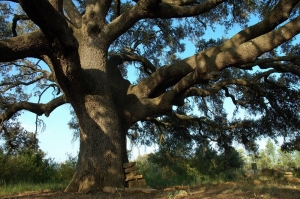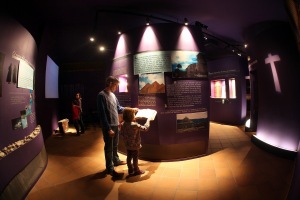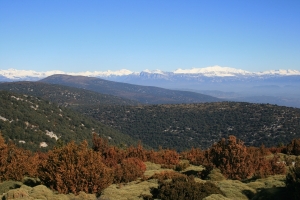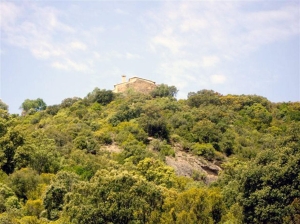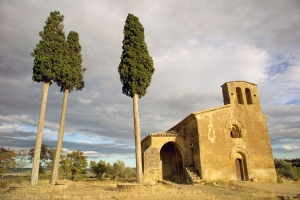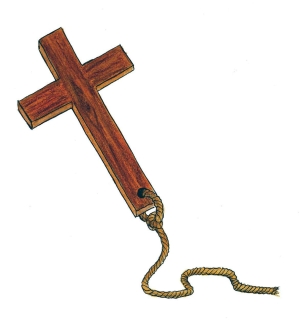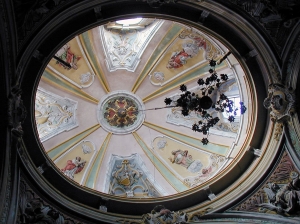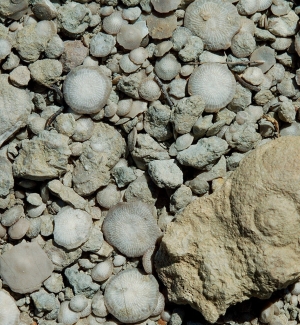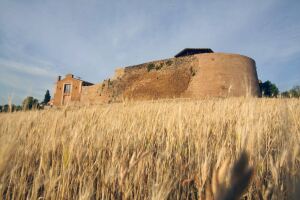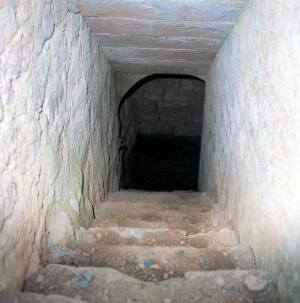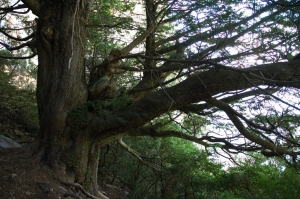The chapel of Nuestra Señora de Trevino in Adahuesca (13th century) is all that remains of an old monastery, which once had an elegant cloister. There are very few historical references to the original building, but with a bit of imagination it is possible to recreate an image of the square cloister, once planted with laurel and now with cypress. Slender columns supported an arcade with semi-circular arches and a well stood at the centre; its water often saved the village in times of drought. Constructed in the 14th century, it was demolished in 1965 due to the threat of complete ruin.
It is thought that the name Treviño may be derived from the Spanish word viña meaning vine as the chapel is, and has always been, surrounded by vineyards, although there is another theory. Legend tells that Treviño was on the boundaries of three distinct dioceses and that the three church dignitaries could hold meetings around a table without leaving the limits of their own parish. History or legend, it is true that the word Treviño appears to come from the Latin word trifinium meaning three frontiers, boundaries, regions or people.
The church’s east end is polygonal in appearance from the outside with a semi-circular internal appearance and the nave is covered with a pointed barrel vault. The cornice that runs through both the apse and the nave is supported by a corbels roughly decorated with geometric motifs, scrolls and human faces.
The smaller doorway on the main facade opens up into a semi-circular arch. This is framed by a moulding with diamond points and the tympanum boasts a Christogram with a symbol of the Holy Trinity. Above this there is a window with the same diamond-point decoration.
The main doorway is on the north wall and presents five archivolts and various capitals. The facia is decorated with geometric motifs, a decoration of scrolls on the intrados of the arch and the remains of chequered moulding. Previously, there had been a Gothic porch and both parts of the building had a polychrome finish. The Romanesque masons were limited in terms of the carving of ashlars for the walls and the voussoirs of the arches. Only the most skilful were able to achieve highly decorated pieces, mostly featuring vegetal or geometric repertoires such as those on the archivolts and the capitals of the doorway. The corbels that support the cornice also give examples of their work with roughly carved, anonymous human faces that are likely to have church provosts, stone masons, nobles or plebeians.
The principal teachings of architecture of the Romanesque era were those of solidity, durability and huge proportions. To apply these principles it was necessary to master the stone vault, which, with its concave shape, also made symbolic reference to the celestial vault of heaven. However, the thickness of the supporting walls impeded the opening of large windows and the lack of light generates a special atmosphere that is palpable upon entering a Romanesque temple.
The interior walls were usually chiselled or chipped in order to obtain a flat surface of the right texture for murals. In the Romanesque era the walls were seldom left unpainted and it was considerably cheaper to display a pictorial programme than to order carved pieces.
In the apse, it is still possible to see the remains of paintings that represent Jesus being resuscitated, with the appearance of Mary Magdalene; they are both informative and expressive. The painting is outlined with thick black lines that frame the flatness or brightness of the different colours, mainly red, blue and white.
Both inside and outside the temple, the pure and intense colours shown on the capitals, the shafts and the archivolts are testament to the stonemason’s work.
On Good Friday, the inhabitants of Adahuesca dress as Romans and go to Treviño as they have over many years and after the mass they share out biscuits and wine. According to tradition, the Virgin Mary performed a multitude of miracles to those who attended the church. Wax and silver votive offerings made in the shape of eyes, legs, hands and feet are attached to the chapel’s wrought iron grille and make reference to the many miraculous recoveries. In the18th century it was still possible to see the shirt and shoes of a woman hanging on the grille; it is said that was hit by a bolt of lightening while praying yet left the church unharmed.



